With the warm weather approaching, it’s time to start planning your next RV trip — but before you can hit the open road, there’s one important detail that must not be overlooked: connecting your vehicle to a septic system. If this idea sounds intimidating, don’t worry — this guide has got you covered! This is an in-depth guide to how to properly hook up an RV to septic systems and the equipment necessary for the job. Get ready to explore all the essential steps of RV hook-up and become a fully-fledged camper!
Table of Contents
What is a Septic Tank and why do you need it in your RV?
A septic tank is a self-contained, underground wastewater storage container. It collects and stores sewage from the toilets, sinks, showers, and other plumbing fixtures in your RV. Septic tanks are an important part of any off-grid wastewater system because they provide efficient treatment and disposal of wastewater.
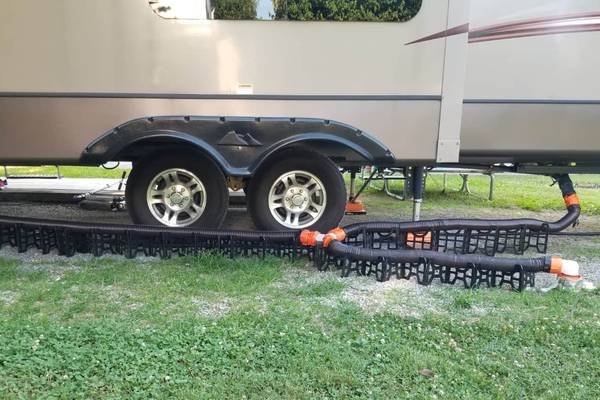
Septic tanks are designed to separate solids from liquids so that only liquid waste passes out into the drain field (also known as leach or absorption field). Here, bacteria break down hazardous materials, allowing the remaining water to percolate into the ground safely. This process helps prevent groundwater pollution and contamination of nearby sources of drinking water.
Septic tanks come in various sizes depending on your RV’s needs. It is important to choose the right size tank for your RV so that it does not get overloaded and cause a backup. The tank should also be installed correctly, preferably with the help of a professional who specializes in septic tanks.
By having a properly functioning septic tank system in your RV, you can ensure safe and efficient wastewater disposal without damaging nearby water sources or land. This will help maintain a healthy environment for everyone!
How do Septic Tanks Work?
Septic tanks are a necessary part of many homes in the United States. They serve as an onsite sewage treatment system, providing a convenient and cost-effective way to store and treat wastewater from home plumbing.
A septic tank is typically made of fiberglass, steel, or concrete and buried underground in a large holding area outside the home. The tank is connected to all drains within the house via pipes so that wastewater flows freely into it. Wastewater remains inside the tank for 24 hours or more while it gradually separates into three layers: scum, effluent, and sludge.
The upper layer is made up of fats, oils, and other light materials that rise to the surface – this is known as scum. The middle layer is an effluent containing mostly water, suspended solids, and small amounts of organic material – this is the liquid that eventually leaves the tank and flows into a drain field or other onsite treatment system. The bottom layer consists of heavier solid materials such as sand and silt which settle to the bottom – this is known as sludge.
In addition to treating wastewater, septic tanks also trap solid materials that would otherwise plug up pipes or damage the drain field. As long as a tank is properly maintained and pumped regularly, it can last for decades and provide an effective solution for onsite sewage treatment needs [1].
Types of Septic Tanks for RV
Septic tanks come in a variety of sizes, shapes, and materials, with the most common being plastic or concrete. Plastic septic tanks are lightweight and more affordable, but they need to be replaced more often than concrete tanks. Concrete septic tanks can last up to 50 years and are better able to withstand ground movement without cracking. They are also more expensive than plastic tanks.
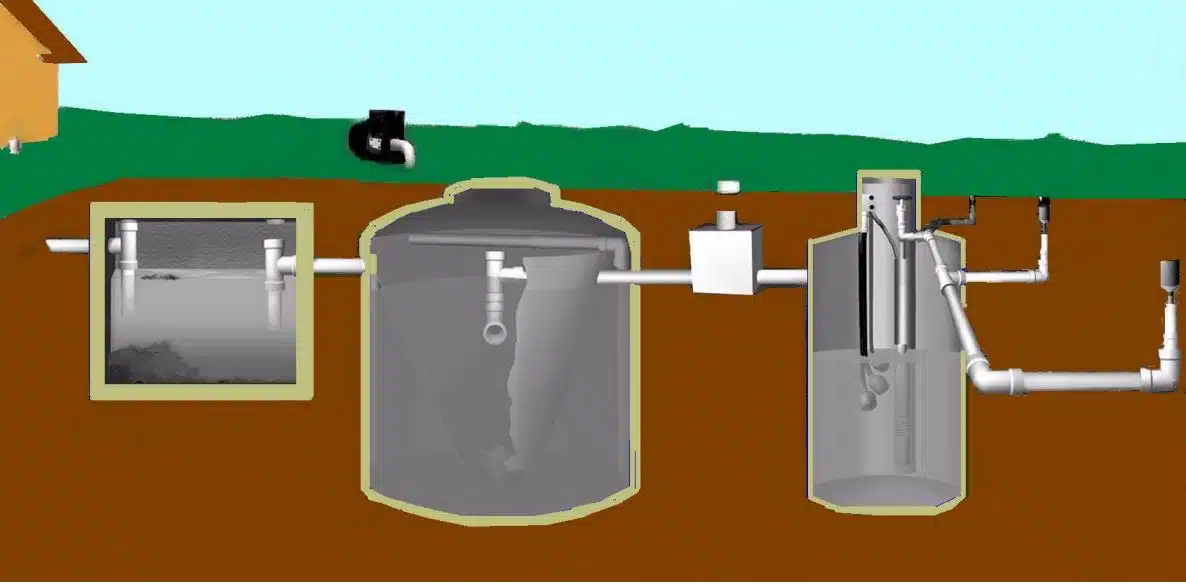
Septic tank systems also vary depending on the type of wastewater treatment desired. Common types of septic tanks include aerobic, anaerobic, pressure distribution, gravity flow/drip dispersal, and mound systems. Aerobic systems use oxygen-rich bacteria that break down waste quickly and require periodic maintenance for efficient operation. Anaerobic systems rely on anaerobic bacteria to break down waste, but they take longer and don’t require as much maintenance. Pressure distribution systems evenly distribute wastewater throughout the drain field using a pump and pipes.
Gravity flow/drip dispersal systems allow wastewater to move from the septic tank into the drain field through gravity alone, while mound systems involve constructing an artificial mound around the septic tank so that wastewater can be distributed more effectively.
No matter what type of system you choose, it is important to maintain your septic tank properly in order for it to function correctly. This includes regularly inspecting and cleaning your septic tank, having it pumped out every 3-5 years (depending on usage), protecting it from root intrusion, avoiding flushing anything other than toilet paper and human waste, and avoiding the use of chemical drain cleaners. Proper maintenance will help keep your septic tank system functioning properly for years to come.
Things To Consider When Choosing The Best Septic Tanks For RV
Capacity
The most important factor to consider when selecting a septic tank for RV is the capacity of the tank. You want to make sure that your septic tank can hold enough waste to meet your needs without overflowing or not having enough room. Depending on the size of your RV, you may need a larger capacity than some standard-sized tanks. For example, some travel trailers may require up to 40 gallons of waste storage, while other RVs may only need a 30-gallon tank.
Durability
When selecting the best septic tanks for an RV, you should also consider the durability of the materials used to construct them. Most septic tanks are made from plastic and are designed to withstand extreme temperatures and environmental conditions. However, some higher-quality products are available in other materials like concrete or stainless steel, which can provide extra strength and durability. Make sure that whatever material you choose can handle rough terrain and heavy loads without cracking or deteriorating over time.
Type of septic tank
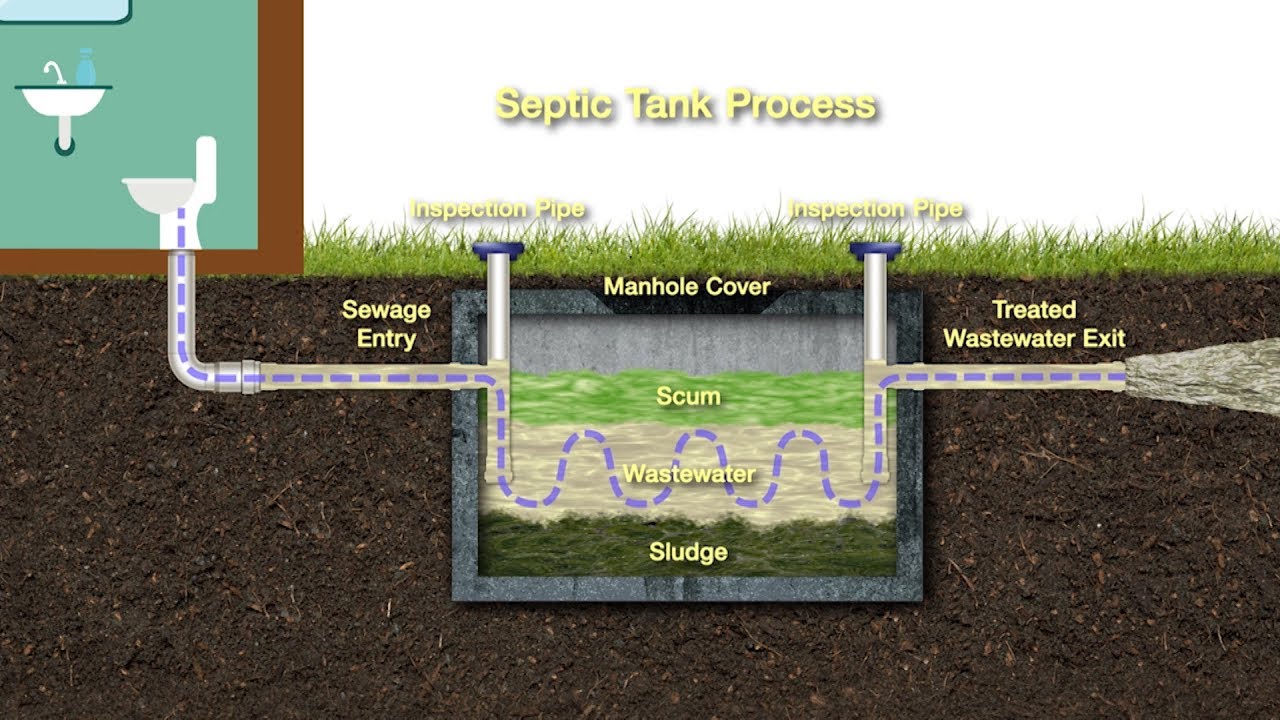
Different types of septic tanks are available to meet the needs of different RV owners. Some tanks come with a floating dome lid, which helps keep out rainwater and other debris. Others feature a pump-out system that allows you to easily remove waste from the tank. Some models include an aerator to assist in the breakdown of solid wastes.
Maintenance Requirements
Finally, when choosing the best septic tank for your RV, make sure to consider the maintenance requirements associated with the product you’re considering. Most modern tanks require minimal maintenance, but some may need more frequent attention or special cleaning solutions to ensure proper operation. Be sure to research what is required for each type of tank before making your decision so that you can plan ahead for any potential maintenance needs [2].
How to Hook Up Your RV Sewer to a Septic Tank Permanently?
Step 1: Determine the location for the sewer connection and prepare the area
You will need to make sure you have a clear, flat surface that is in a suitable location to connect your RV’s sewer system. Make sure you consider any campground rules when deciding where to place the connection. Once you have found an appropriate spot, dig a hole about 6 inches deep and 12 inches wide.
Step 2: Place the holding tank in the dug-out area
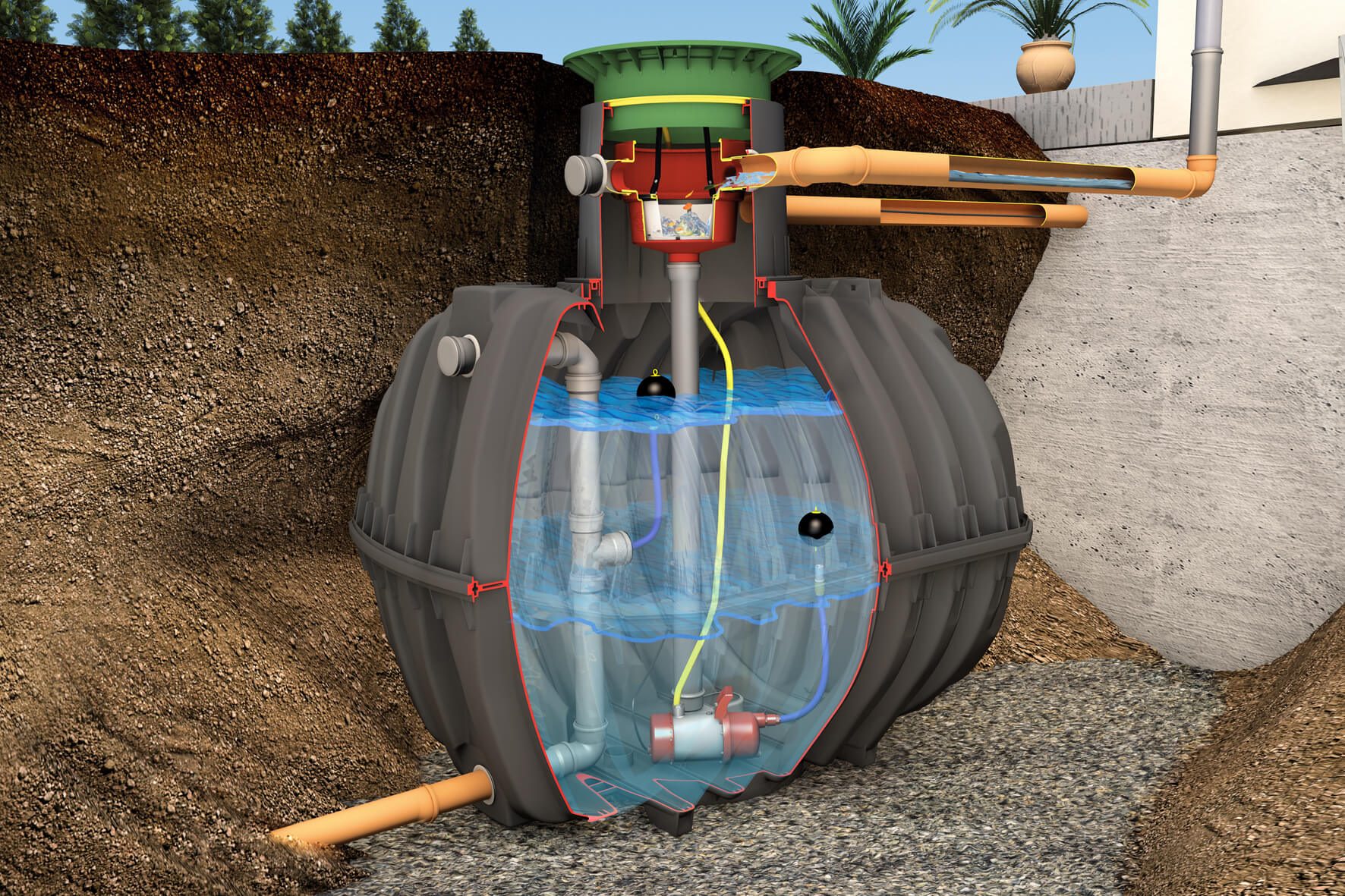
Use PVC pipes or other materials to create a platform and prop up your holding tank so that it is level with the ground. Make sure there are supports around the edges of your holding tank so it will not shift while being used. Securely fasten these supports into place using cement or other suitable materials.
Step 3: Connect the sewer hose to the holding tank
Once your holding tank is in position, attach one end of your RV’s sewer hose to it. Make sure both ends of the hose are securely connected so that there are no leaks.
Step 4: Connect the holding tank to the septic system
Using PVC piping or other appropriate material, connect your holding tank to the existing septic system. It is important that you make sure all connections are secure and leak-free before proceeding.
Step 5: Add gravel around the pipe connections
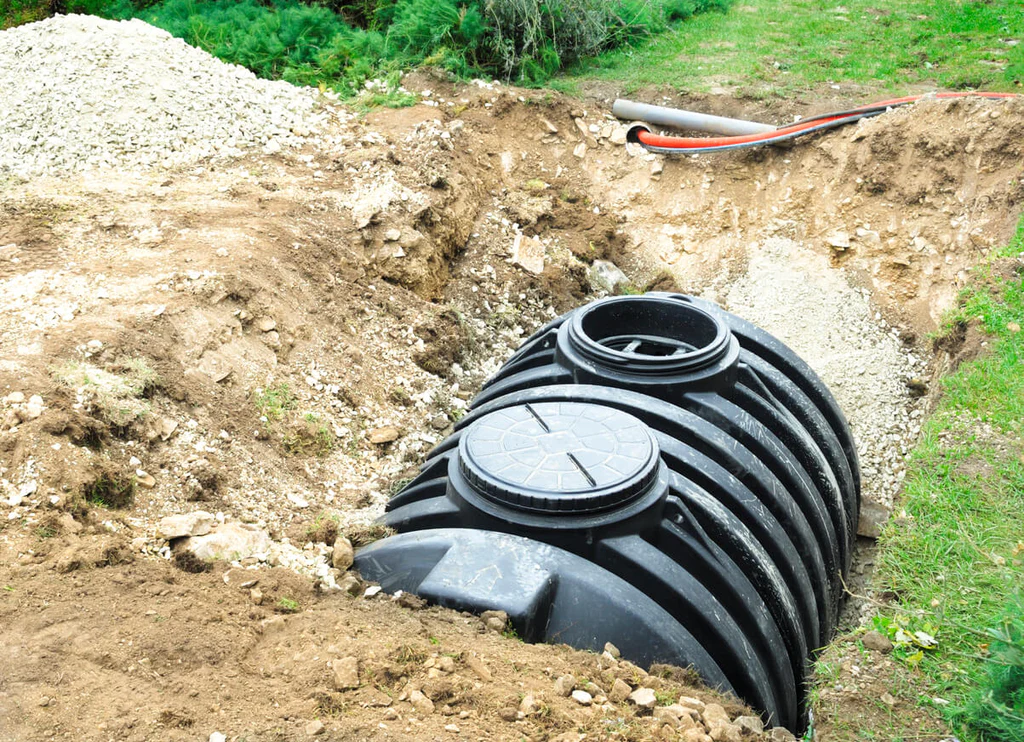
Adding gravel around each pipe connection will help ensure they stay in place and provide extra support for them. Once you have added enough gravel, backfill the area with dirt and make sure to compact it as much as possible.
Step 6: Test your connections
The last step is to run water through the system and check all connections for any leakages.
Tips For Keeping Your Septic Tank Working Well
- Have your septic tank cleaned and inspected regularly. This is the best way to ensure that your system will continue functioning properly for years to come, as well as find any issues before they become major problems.
- Make sure you have adequate drainage from the home into the septic tank. If water is being sent down a drain too quickly, it won’t be able to filter through the tank correctly, causing backups and other issues.
- Do not put anything besides wastewater and biodegradable materials in your septic tank – this means no grease, oils, medications, etc., as these can damage both the tank itself and its ability to break down solids effectively over time.
- Take care when using cleaning products or chemicals in your home, as many of these can damage the biological balance that your tank needs to maintain in order to work properly. When possible, opt for environmentally-friendly alternatives instead.
- Make sure not to plant trees and shrubs too close to your septic tank or drain field – the roots can cause blockages or other damage over time. Additionally, watch out for leaks around any plumbing lines leading into the system, which can also provide an entry point for roots to grow through.
- Keep an eye on usage habits in the house – reducing water consumption (e.g., by ensuring everyone is aware of how often they should be running a load of laundry, taking shorter showers, etc.) can go a long way in keeping your septic tank working effectively.
- If you’re considering getting any new plumbing fixtures or appliances for the home, make sure to check that they are compatible with the size and type of system you have before making any purchases.
- Be aware of changes in conditions on your property – if there is any construction occurring nearby, this could potentially lead to soil compaction which could harm the effectiveness of a drain field. Additionally, extra water runoff from large rain events should be diverted away from the tank and drain field as much as possible in order to prevent flooding and other issues [4].
How often should your empty RV septic tanks?
To maintain a healthy RV septic system, you should empty your tanks at least every three to four days. However, if you are staying in one place for an extended period of time, such as camping for an entire week, then it is best to empty the tank more often. For example, emptying the tank twice during a seven-day stay is recommended.
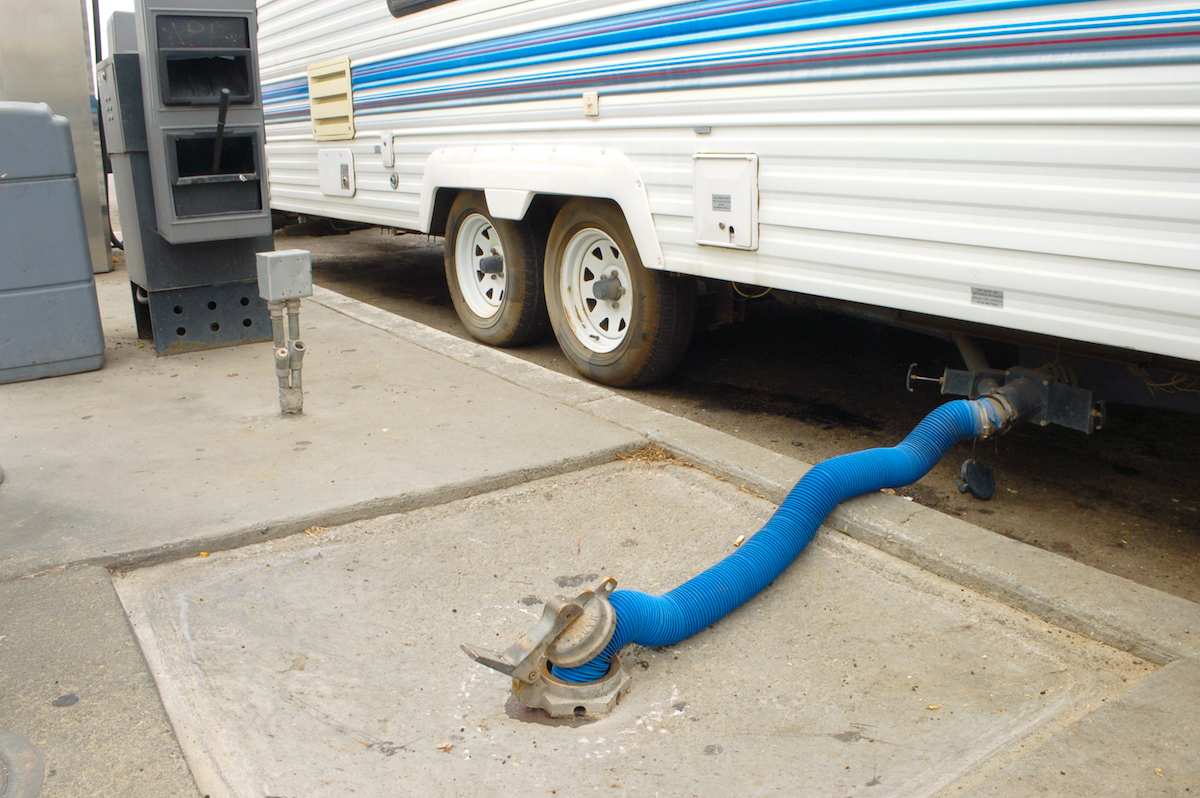
Additionally, if you are using a lot of water, such as taking frequent showers or washing dishes, then you may need to empty your tanks even more often. It is important to keep an eye on your tank and make sure it does not become overly full so that your RV’s septic system continues functioning properly.
The frequency of emptying your tanks will also depend on how many people are using the system and how much water is being used. If you have a large group or family using the system frequently, then emptying more regularly may be necessary. In any case, it’s important to never let your tanks become too full as this can quickly lead to build-up and clogs that could cause serious damage to your RV’s plumbing.
Finally, when camping in remote locations with no access to a dump station, it is best to practice “blackwater stewardship” by safely disposing of wastewater far away from waterways and drinking sources. You can do this by digging holes at least 200 feet (60 m) away from any water source and burying the wastewater at least six inches (15 cm) deep. This will help prevent contamination and keep the environment clean and safe for everyone.
Taking care of your RV’s septic system is essential for a comfortable and enjoyable camping experience. By following these tips, you can ensure that your septic system stays healthy so that you can focus on making memories with your family during your trips.
FAQ
How long does a 30-gallon black water tank last?
The average lifespan of a 30-gallon black water tank is between 3-5 years. This estimate depends on how often the tank is emptied and maintained, as well as things like water quality and regular use. Additional factors like temperature can also affect the lifespan of a black water holding tank. To maximize the life of a black water tank, it should be properly installed, regularly serviced, and properly maintained. Regularly emptying and flushing the tank can help to prevent damage due to waste accumulation or clogging. Additionally, proper maintenance such as keeping the lid closed when not in use and avoiding overfilling will help extend the life of your black water holding tank.
How do you hook up an RV sewer line?
The first step in hooking up an RV sewer line is to identify the sewer connection point on your vehicle. This can typically be found near the rear bumper or underneath your unit. Once you’ve located the connection, attach a sewer hose to it and connect the other end of the hose to the campground’s sewage disposal system. Make sure that all connections are secure before testing them with water pressure. Finally, inspect all seals and connections for signs of leaks or damage before each use.
Can I keep my RV black tank closed when not in use?
Yes, you can keep your RV black tank closed when not in use. Doing so will help improve sanitation as well as reduce odors related to waste accumulation. Additionally, it can help extend the life of your black water tank by reducing the risk of clogs and damage due to waste buildup. Before closing the tank, make sure that all wastewater has been drained and flushed from the system.
What is a holding tank?
A holding tank is a container that stores wastewater until it can be properly disposed of. Holding tanks are often used in recreational vehicles (RVs) or boats to store grey water or blackwater from sinks, showers, and toilets. The contents of a holding tank should be emptied regularly to prevent odors and overflows as well as to reduce the possibility of contamination. Additionally, regular maintenance such as flushing out solids and checking connections should also be performed on a holding tank.
Are there any special considerations when emptying a black water tank?
When emptying a black water tank, it is important to be aware of the disposal regulations in your area as well as the risk of contamination. In some areas, dumping wastewater from an RV or boat on the ground may be illegal, and it can also pose a threat to local ecosystems. Additionally, tanks should be emptied properly and flushed thoroughly to avoid clogs or backups. It is also important to remember that all waste should be disposed of in a proper facility, not down sinks or drains.
How do you hook up a PVC pipe to an RV?
Hooking up a PVC pipe to an RV is a relatively straightforward process. Begin by attaching the hose adapter to the end of the pipe, then attach the other end to your RV’s sewer connection point. Use clamps or seals to ensure that all connections are secure before testing them with water pressure. Once everything is connected and tested, you can add additional pipes as needed for your application. Finally, inspect all seals and connections for signs of leaks or damage before each use.
Useful Video: Should I Connect my RV to Home Sewer / Septic?
Conclusion Paragraph
To permanently hook up an RV to a septic system, it is highly recommended to hire a professional experienced in RV hookups. This ensures that the job is done correctly and safely. Also, make sure that local laws and regulations are followed when making the connections. By following these steps, you can prevent any issues from arising with your septic system in the future. Additionally, regular maintenance of both the RV unit and septic should be done to ensure the smooth operation of the entire system. With proper installation and maintenance, your RV will be connected securely for years to come.
References:
- https://campaddict.com/rv-holding-tanks/#
- https://www.petesoutflow.com/5-factors-to-consider-when-choosing-a-septic-tank
- https://beezzly.com/how-to-permanently-hook-up-your-rv-to-septic
- https://www.bio-sol.ca/en/guide-for-rv-holding-tank/

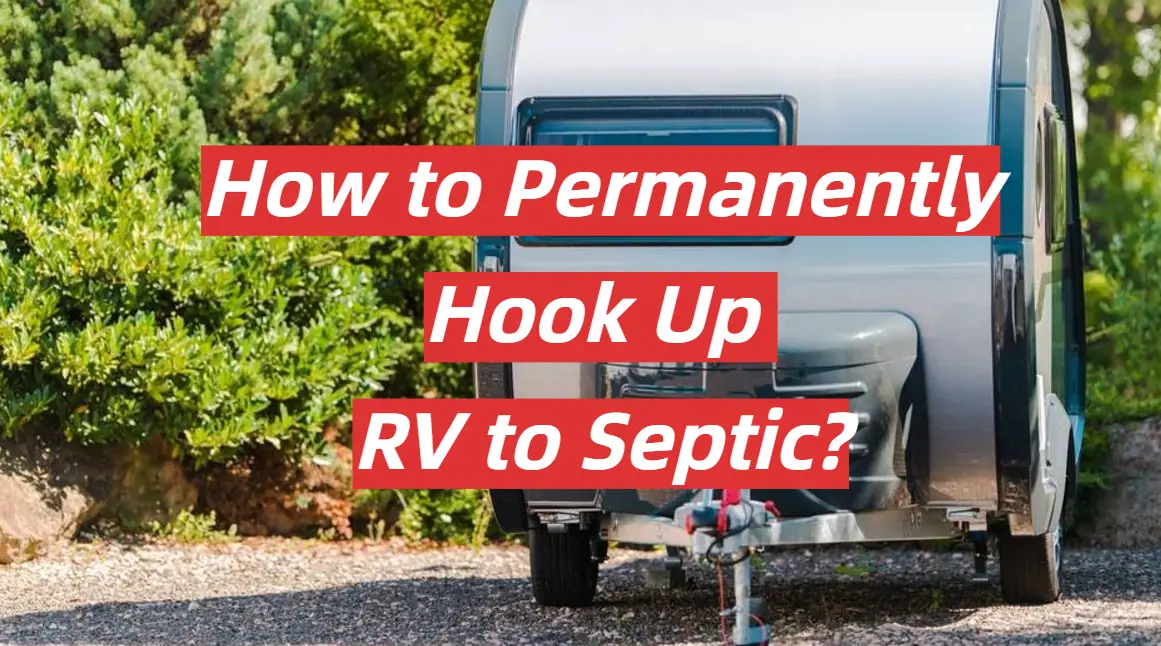
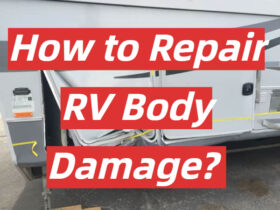
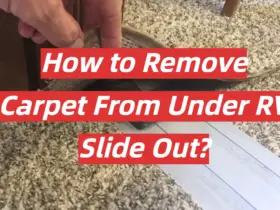
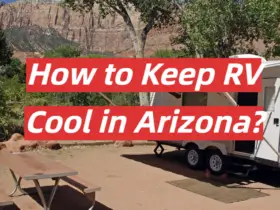
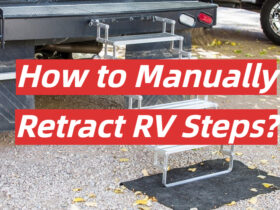
Leave a Reply